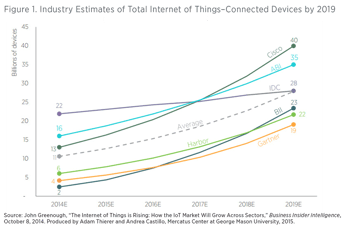Photo Credit: Sawyer Bengtson
There's something almost sci-fi about the concept of digital twinning, the idea that we can capture so much data about something that we can recreate it and its behaviors in minute detail.
But science fiction, it ain't. Better connectivity, higher bandwidth, and greater processing power and storage capacity are all helping to enable the rise of the Internet of Things (IoT) and its hard-working offspring, the Industrial Internet of Things (IIoT) -- and with the IIoT, in particular, come deployments that can easily reach tens of thousands of devices per application. Such IIoT applications are used, for example, in industrial settings, where an entire factory may almost literally be covered in sensing and monitoring devices capturing a flood of real-time data. The data collected might include things like temperature, vibration, moisture, noise, you name it -- if it's data that can be collected, there either are or soon will be sensors to do the collecting. That massive amount of data -- and we're talking zettabytes of data, here, which is trillions of gigabytes -- allows for the creation of a highly accurate model of whatever is being monitored: Its Digital Twin.
 Modeling real-world objects through data is nothing new, of course; we've been doing it in some way or another for a very long time. If you want to be cheekishly philosophical (go ahead, I'll wait), you might even say that your world is just a model that your brain constructs based on data inputs from its vision, taste, hearing, smell and touch sensors -- but I'm referring more to the models that we've created for predictive and analytic purposes, such as the ways in which we've understood the solar system to work over human history.
Modeling real-world objects through data is nothing new, of course; we've been doing it in some way or another for a very long time. If you want to be cheekishly philosophical (go ahead, I'll wait), you might even say that your world is just a model that your brain constructs based on data inputs from its vision, taste, hearing, smell and touch sensors -- but I'm referring more to the models that we've created for predictive and analytic purposes, such as the ways in which we've understood the solar system to work over human history.
The Ptolemaic model of the solar system, based on the notion that celestial bodies orbited around the Earth, was built from the observable data of the time and was relatively good at predicting the positions of the planets. The Copernican model, with 1000+ years more of data to work with, moved the sun to the center of the solar system and was even more accurate in its predictions. Why? Because data that doesn't fit the model can help reveal not only its flaws, but also suggest how it might be improved.
We've come a long way since Copernicus, of course. In the early days of spaceflight, we had models built by NASA in the early days of space flight that allowed ground-based engineers to work on a sort of primitive twin of spacecraft in flight; now we have digital twinning manifest as part of the NASA Technology Roadmaps TA 11: Modeling, Simulation, Information Technology, and Processing.

Private industry isn't waiting for NASA to lead the way, however; where there's a use-case for it, companies are doing it. The Williams Martini Formula 1 racing team, for example, has mounted hundreds of sensors on their race cars capturing a variety of information from all over the vehicle -- with the generated data being pored over by a team of 30 to 40 engineers, who are using -- guess what? -- a digital twin of the physical vehicle to correct problems and run predictive analyses in order to gain some sort of competitive advantage come actual race time. What's enabled Williams Martini to achieve this level of digital twinning? According to Graeme Hackland, the Williams Martini CIO, it's the recent ability to get all of the generated data from the vehicle to the engineers at the factory.
Better connectivity, greater storage capacity and fast, powerful processing: I can guarantee that those enablers have already come to a global village near you. And because that's true, I feel pretty safe in also guaranteeing that Digital Twinning will be following along shortly, in just about any vertical you could care to name. Buildings, vehicles, chemical tanks, bridges, volcanoes, pipelines, whiskey stills and people will all be modeled in amazing, technicolor accuracy.
 All of which means that if you have or are working on a business offering related to digital twinning, speed to market is going to get more and more important for you with every passing day. The longer you wait, the more crowded your offering's vertical is going to become -- and as competitors beat you to market, you're giving up prime marketing real estate in favor of a hole you've already dug by not being at the forefront of your potential customers' minds.
All of which means that if you have or are working on a business offering related to digital twinning, speed to market is going to get more and more important for you with every passing day. The longer you wait, the more crowded your offering's vertical is going to become -- and as competitors beat you to market, you're giving up prime marketing real estate in favor of a hole you've already dug by not being at the forefront of your potential customers' minds.
Don't put your business in the hole before it's even begun. If speed-to-market is important to you, remember that going to market properly involves far more than just the connected device you've purchased: It takes a clear vision, and the strategy to achieve that vision. But whatever you do, make it soon: Your digital twin will wait, but the market won't.
-----------------------------------------------
Visit David on LinkedIn:
Or find and book time to speak with David directly with his amazing, spectacular appointment-setting tool... He loves it when people use it!
Hero Image Credits: https://www.flickr.com/photos/sharonlinnefaulk/14866902278


